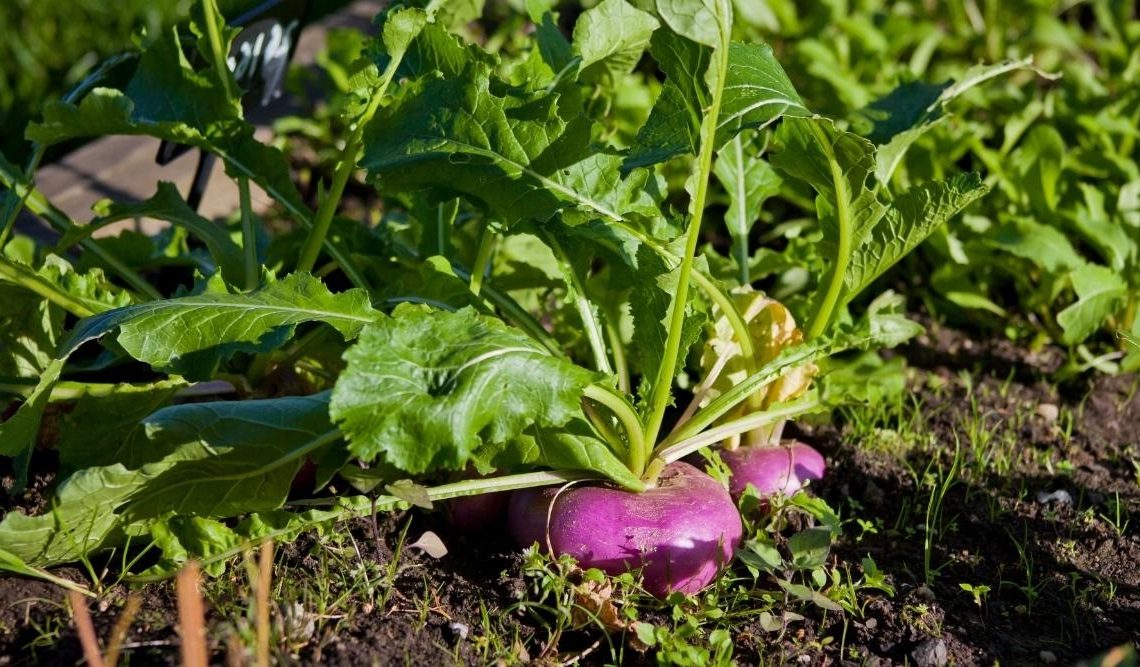

We’re here to help! Wild Yards is a completely free website that is 100% dedicated to helping you create a wildlife-friendly, sustainable yard. Read more
WildYards is reader-supported. When you buy a product through a link on our site, we may earn a comission. Every product is independently selected by our (obsessive) editors and our reviews are unbiased and objective. Read more about our mission or our privacy policy.
Turnips are some of the most divisive vegetables you’ll ever grow and dig up from your garden, mainly thanks to the taste! That said, these mustard plants have a firm place on the dinner table – and some great turnip companion plants can help them prosper.
Fantastic turnip companions include brassicas, rosemary, chives, onion, marigolds, and nasturtiums. Conversely, there are a handful of plants and vegetables that don’t fare so well in a turnip plot.
Why is companion planting important for turnips?
For all that turnips are popularly used as companion plants for other vegetation, they are still at risk from frequent bug visitors. Additionally, companion planting can often improve the taste and yield of turnip crops. You may choose to grow turnips to protect other plants, while your root vegetables grow stronger and larger by way of mutual benefit.
In some cases, turnips may need protection against hungry mammals looking to feast on their leaves. Rabbits and deer, for example, may frequently nibble at turnip leaves if left growing in the open. It’s a good idea to grow strong-smelling herbs and alliums alongside your turnips, for example, to ward away sensitive noses and tongues.
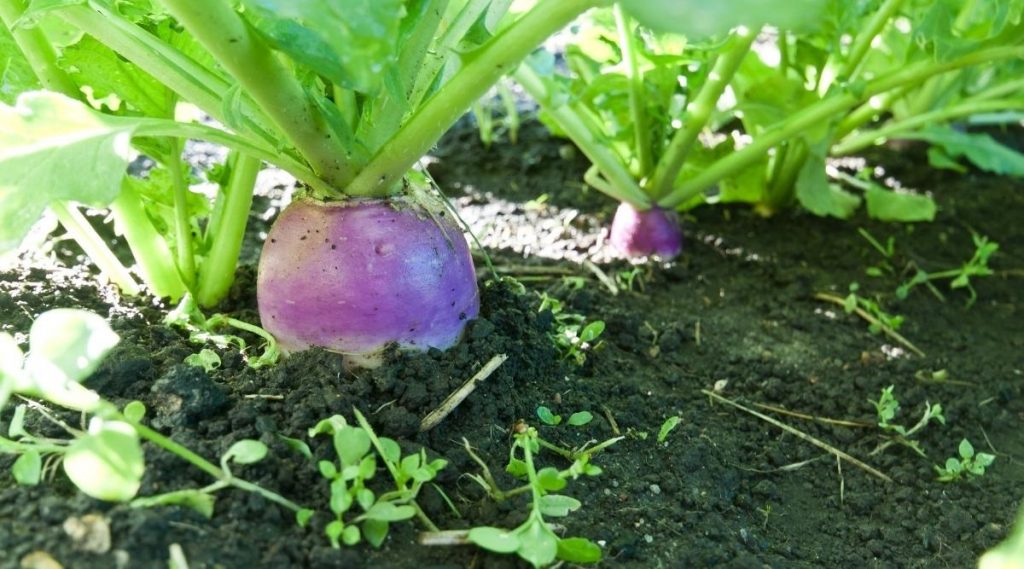
Are turnips good companion plants?
Turnips are frequently grown alongside other vegetables and crops because they can repel aphids. These tiny pests will frequently feast on beans, broccoli, celery, and more without any kind of protection or deterrent. By planting turnips in a border around your more sensitive crops, you can ensure that winged minibeasts stay as far away from your allotment as possible.
That said, not all turnips are so lucky – as aphids can prove persistent enough to nibble away at the odd crop if left unprotected in the wide open. While turnips will turn away some aphids, it’s a good idea to bolster the protection with plants such as vetch to make extra sure.
Conversely, turnips can also help repel slugs and snails, which will inevitably take fancy to leafy greens like those in the brassica family.
On the other side of the coin, turnips don’t famously grow well with other root vegetables thanks to competition for soil nutrition and root space. Some vegetables can also pass on pests to turnips, and vice versa.
Turnip companion plants you’ll want to consider
The following plants, vegetables, and greens are all proven friends of the turnip – whether there are mutual benefits or if they stand to use some of the mustard’s protecting power.
Garlic
The relationship between turnips and some alliums such as garlic is mutually supportive – turnips will help to deter aphids and insect borers such as beetles. In contrast, alliums will prevent onion flies and weevils from attacking mustard plants.
Garlic, in particular, thrives wonderfully grown among turnip crops, and you may even notice a bigger yield in your mustard. You may even notice that both plants produce stronger flavors when grown together.
Be careful when choosing starchy alliums to plant alongside turnips – as some may over-compete for root space, effectively reducing each others’ yields. A good example is onion – while similar to garlic, it’s much more bullish about taking up space.
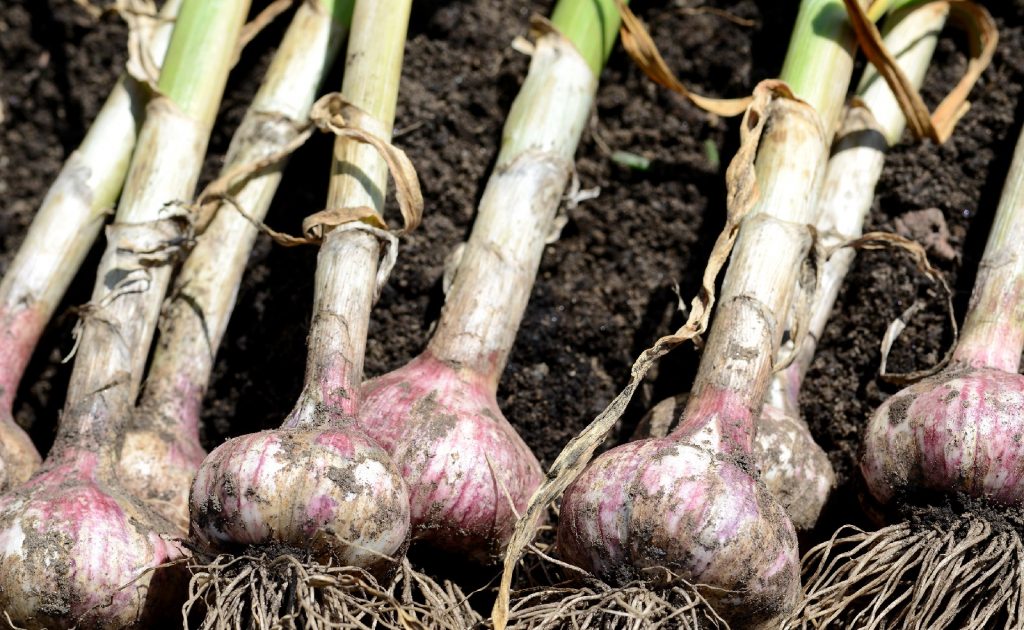
Brassica
Common brassica such as cabbage and broccoli suffer from slug and aphid attacks – and the turnip is a great ‘trap crop’ to help take all the pest attention away from your sensitive greens.
The turnip itself is a brassica – which you’ll need to keep in mind when growing them alongside. In some cases, turnips and other brassicas may share pests and disease – meaning it’s worth growing a third or fourth companion plant to strengthen numbers.
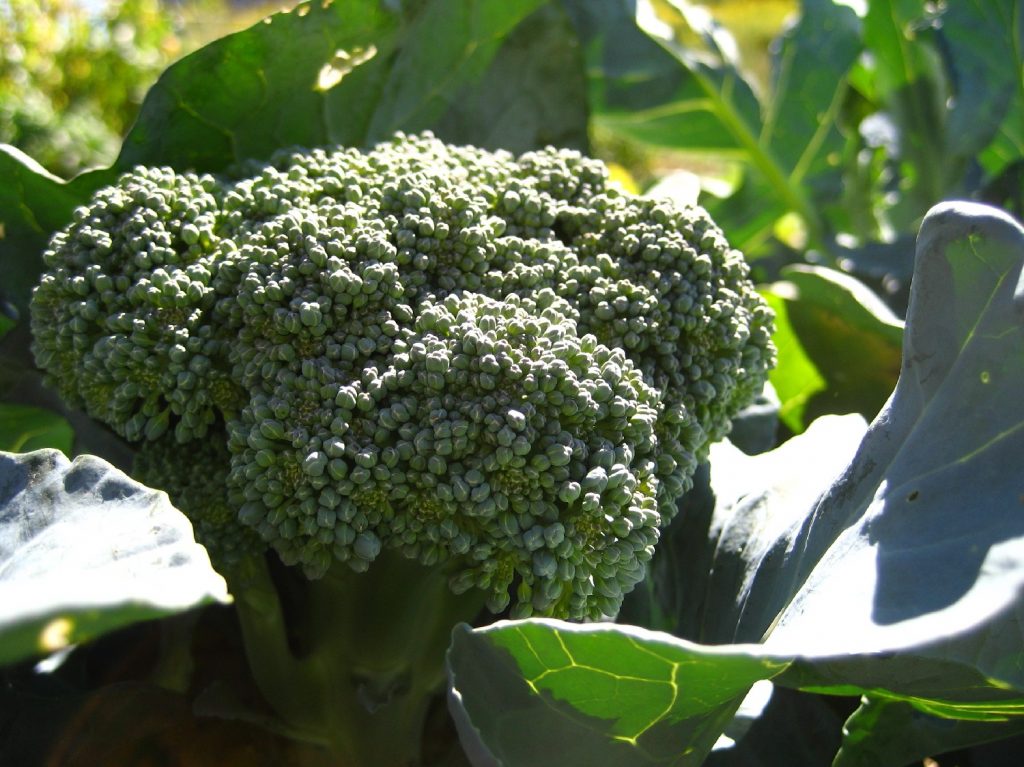
Nasturtiums
Nasturtiums are welcome companion plants if you’d like to attract bees to your garden and other beneficial insects such as wasps and hoverflies. Many of these visitors will not only help pollinate your turnip crop but also help to rid your plot of invasive minibeasts.
Nasturtium will also help to deter cabbage moths with its scent – they’re naturally attracted to most brassica. The nasturtium is also a great mulching plant to grow alongside turnips, as its vines will shade the soil and help to keep the medium moist and weed-free.
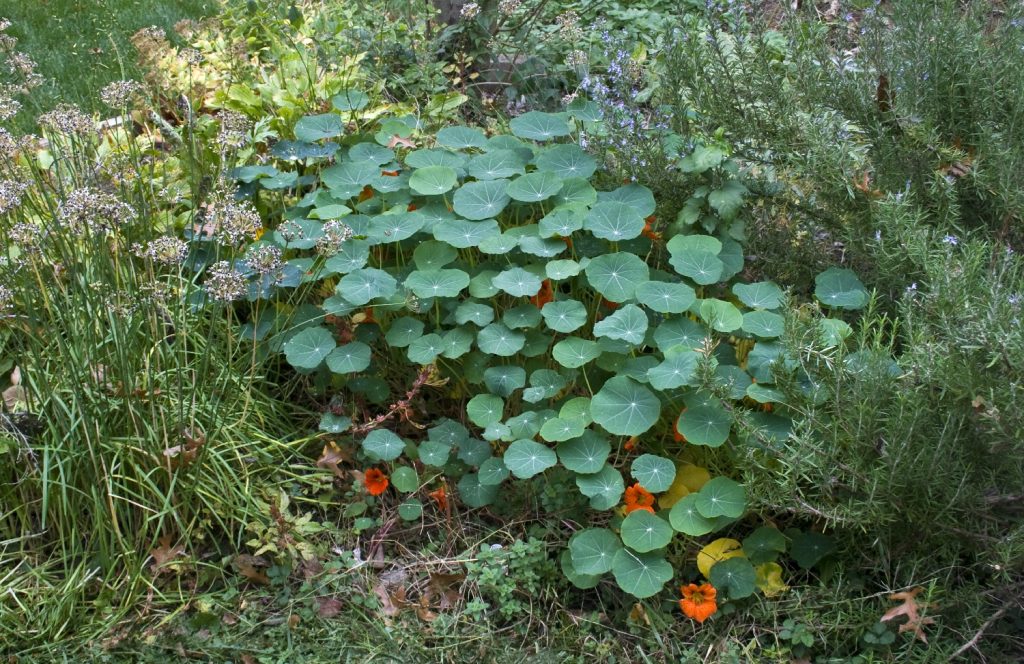
Marigolds
Unproblematic to grow, the marigold is great for attracting pollinators and will welcome wasps to take care of any persistent aphids (that aren’t already deterred by your turnips). While these plants won’t improve the flavor of your turnip crop, they may help your mustards to grow stronger and larger by controlling pests.
It’s also worth making use of your marigolds after they die, too – when used as mulch, the French variety can help to deter destructive worm species from your soil.
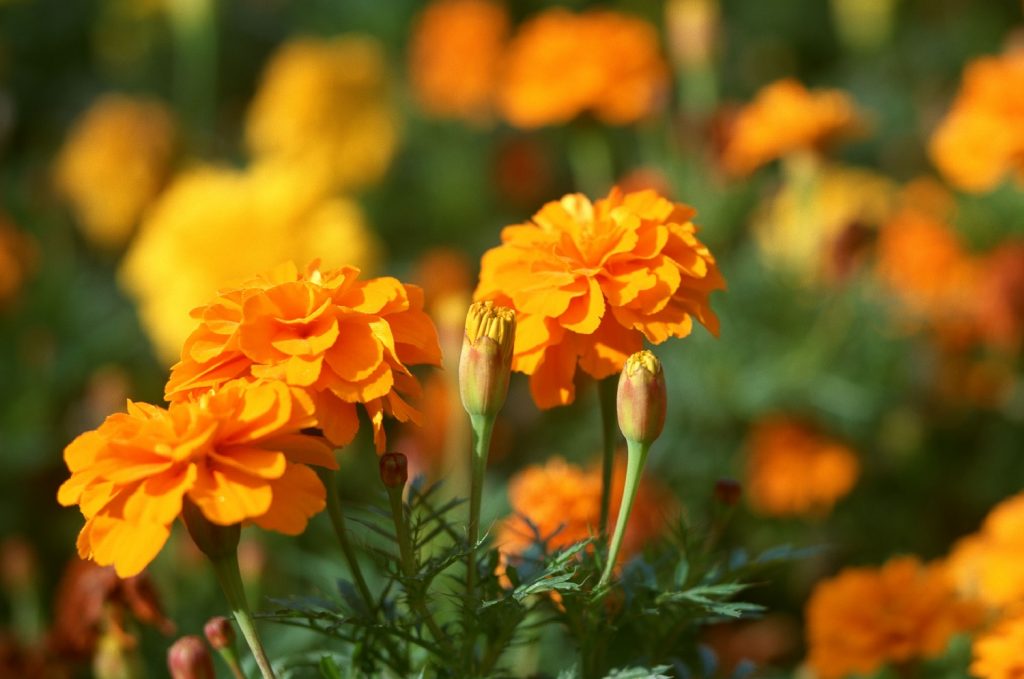
Chives
Like onion and garlic plants, chives are highly aromatic and will help confuse pests that frequently feast on turnips and other root vegetables. Like nasturtiums, chives have a natural mulch effect that can keep weeds at bay from choking up space for your turnips.
Chives will also grow bright flowers that can attract various species of bees to your garden – helping to pollinate your turnips and keeping any other companion plants healthy, too.
Thyme
Aromatic and resistant to drought, the ever-hardy thyme is great for deterring brassica pests such as the persistent cabbage whitefly. This herb will also welcome helpful insect predators to your garden, such as ladybugs – which will feast on anything that dares to munch at your turnips.
Thyme is also highly useful as a fragrant deterrent for many invasive mammals, meaning it’s worth setting a row of this herb around your turnips to prevent deer attacks.
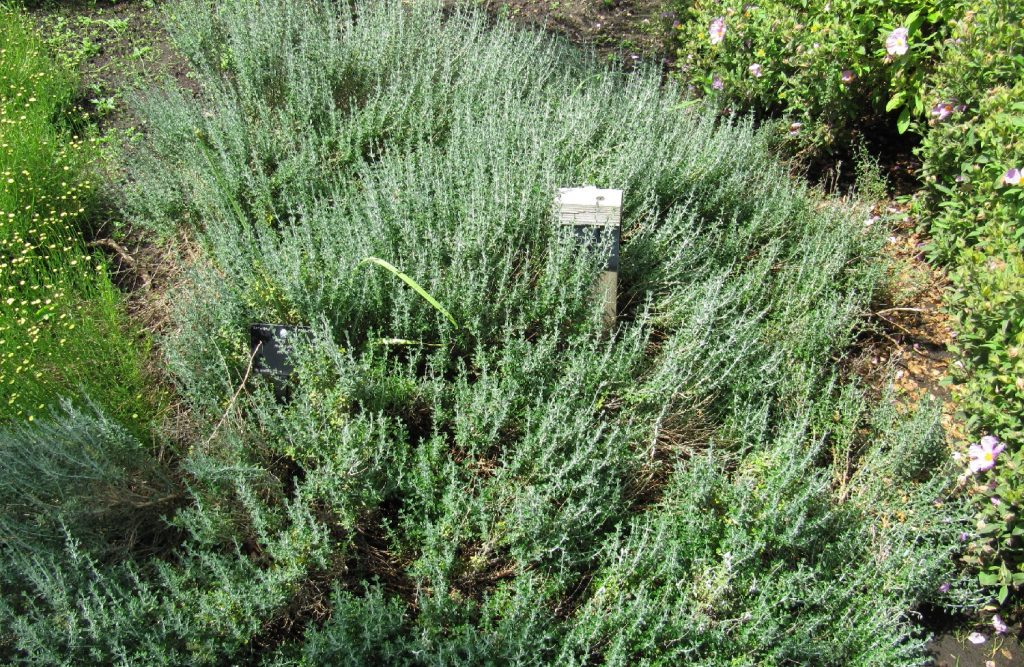
Rosemary
Rosemary, much like thyme, is aromatic and highly deterring to various voracious insects such as beetles and worms. This herb is great at preventing moths from laying eggs in brassicas such as turnips, thanks to its fragrant oil production.
Pairing rosemary and thyme with turnips will give you double the protection against bugs – and it’s also worth considering planting an allium or two so your herbs are protected. Turnips alone can help prevent those aphid species that may slip through and damage rosemary.
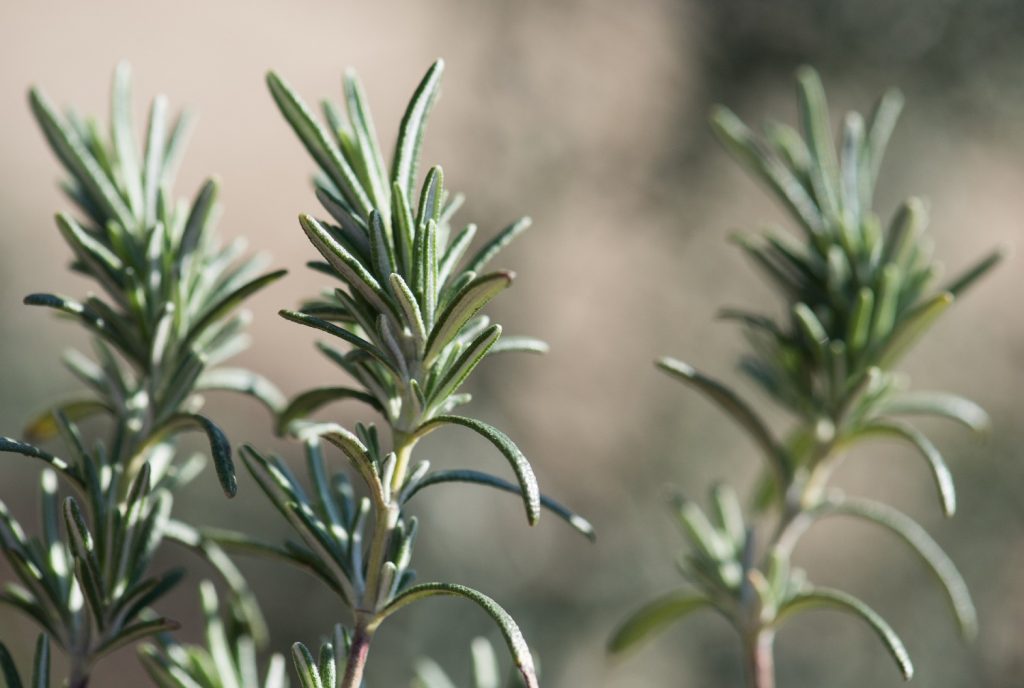
Lavender
Lavender is another herb that’s great for planting with turnips, thanks to its deer-deterring status. It’s also one of the hardiest and least problematic herbs you can grow in your garden, likely to last longer than most other companions in drought – and therefore helping to keep turnips growing stronger for longer.
Lavender won’t compete with turnips for much soil space and also team up well with alliums to keep your mustards growing healthily without insect attacks. You’ll also want to grow lavender to attract butterflies to your plot.
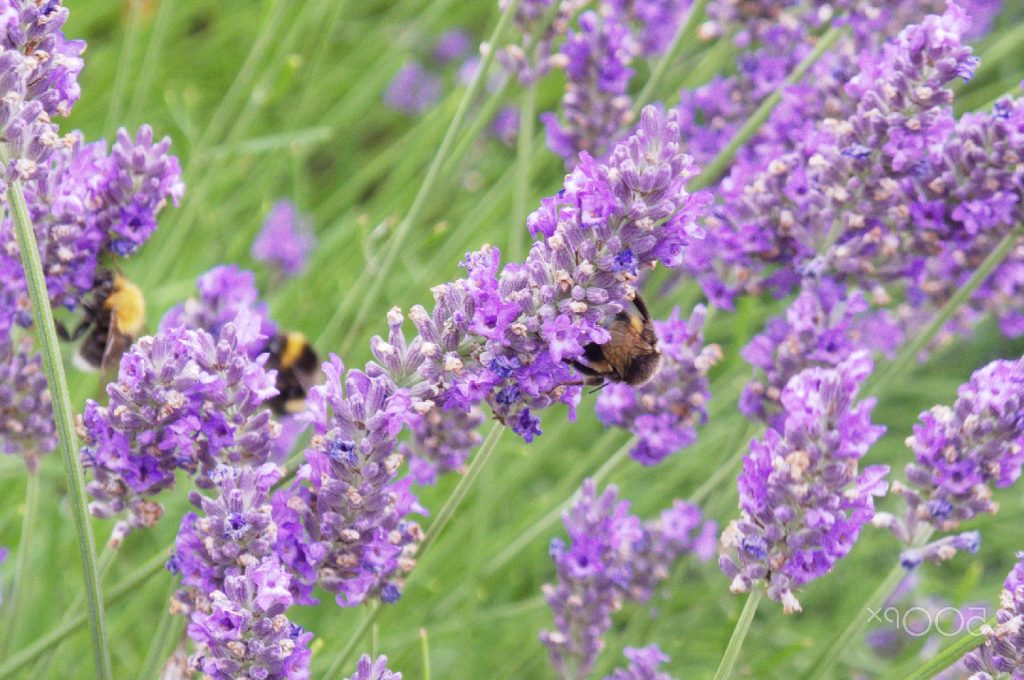
Celery
For all celery is a fairly dull-tasting vegetable, it will readily deter cabbage moths from eating away at turnips and other brassicas. Turnips, in the meantime, can prevent aphids from attacking your celery – they mutually pest-control each other.
A word of warning – growing celery and turnips together without a third companion may result in deer visiting your yard and gobbling up your crops. Deer love celery because it’s fairly bland-tasting – and they’ll snack on turnip leaves, too. Try growing aromatic herbs and/or alliums among your crops to ward off bigger animal visits.
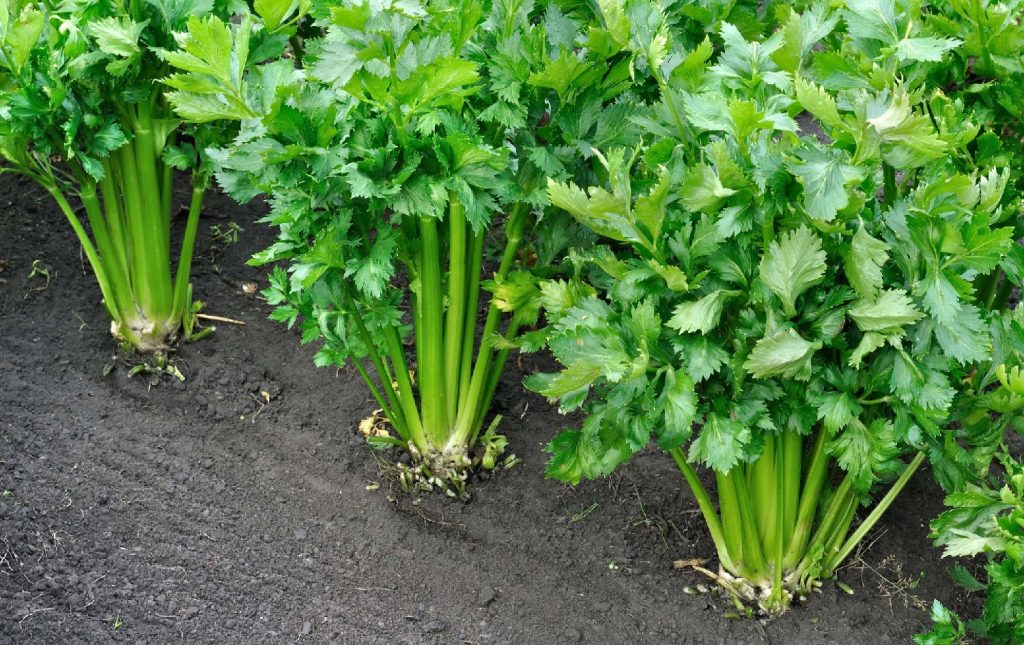
Peas
Peas and beans go a little deeper to support turnips than most, and that’s literally because they can change soil make-up to mustard plants’ benefit. Pea plants can modify bacteria to introduce more nitrogen into the soil, helping turnips grow stronger.
It’s prudent to try and grow peas on as many sides of your turnip crops as you can to ensure the soil gets its nitrogen fix. A word of caution – sometimes peas and turnips can reduce each others’ yields, so be vigilant during the growing season.
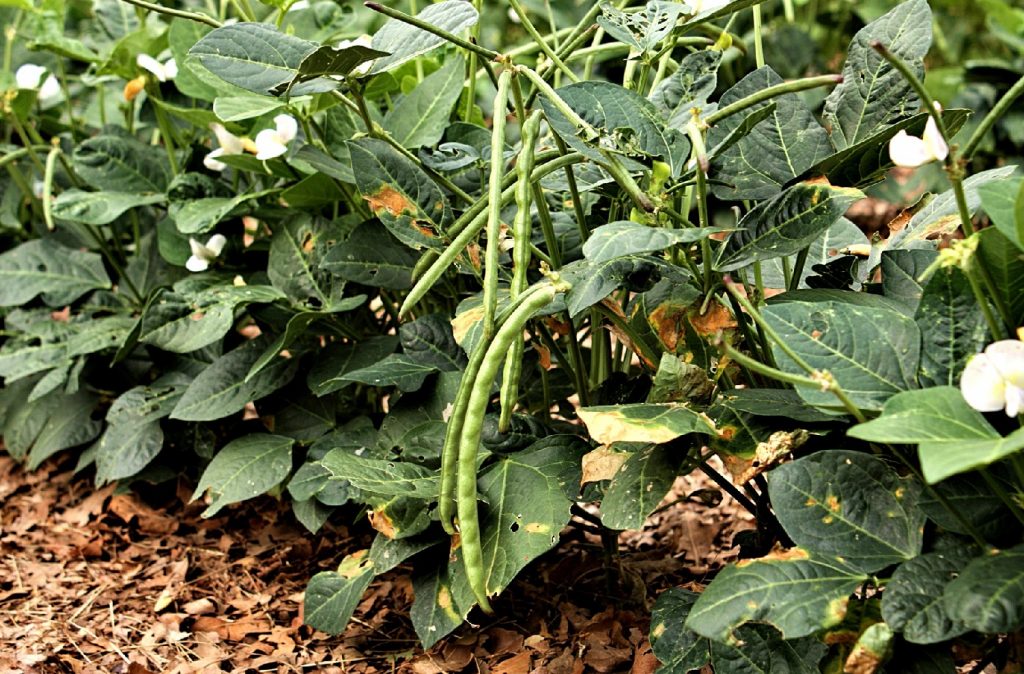
Radishes
For all turnips are great at deterring a variety of bugs, radishes will naturally ward off much of the remaining invasive insects in your garden. Specifically, growing radish plants alongside your turnips can protect them from the likes of squash bugs and any aphids that slip through the net.
These companion plants are not to be confused with horseradish – an altogether different growth that can be detrimental when grown alongside turnips.
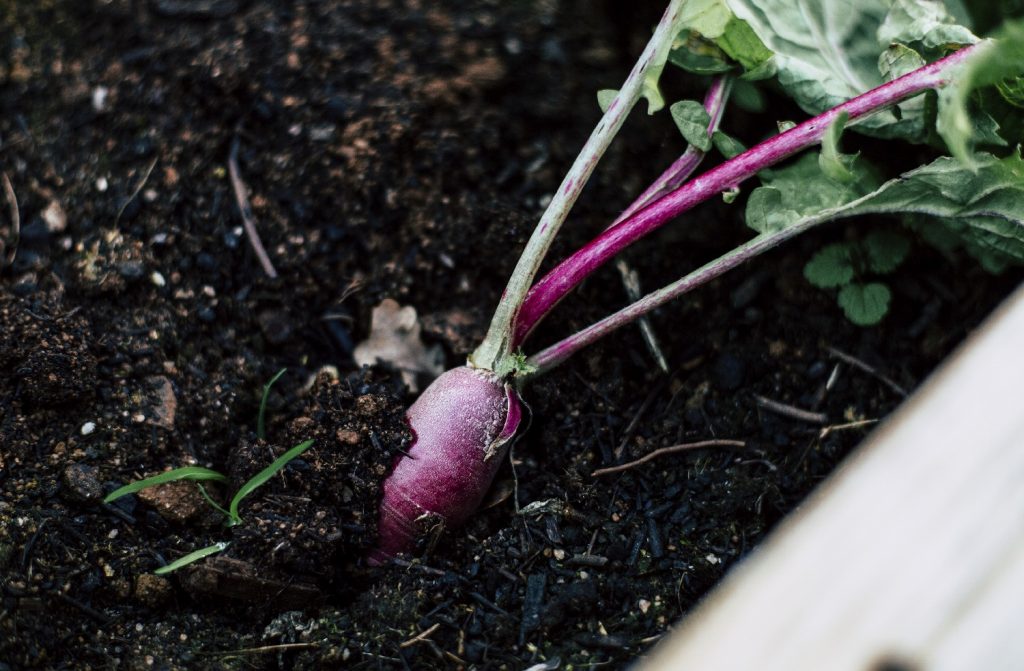
Vetch
Like peas, hairy vetch is fantastic at boosting nitrogen in the soil and can therefore help encourage growth in your turnips. You can also grow vetch as a double protector against aphids and add natural mulch and shade to your turnips’ soil.
Additionally, vetch is also great for helping to protect your turnips’ soil from eroding – it can anchor your growing medium in place with impressive firmness.
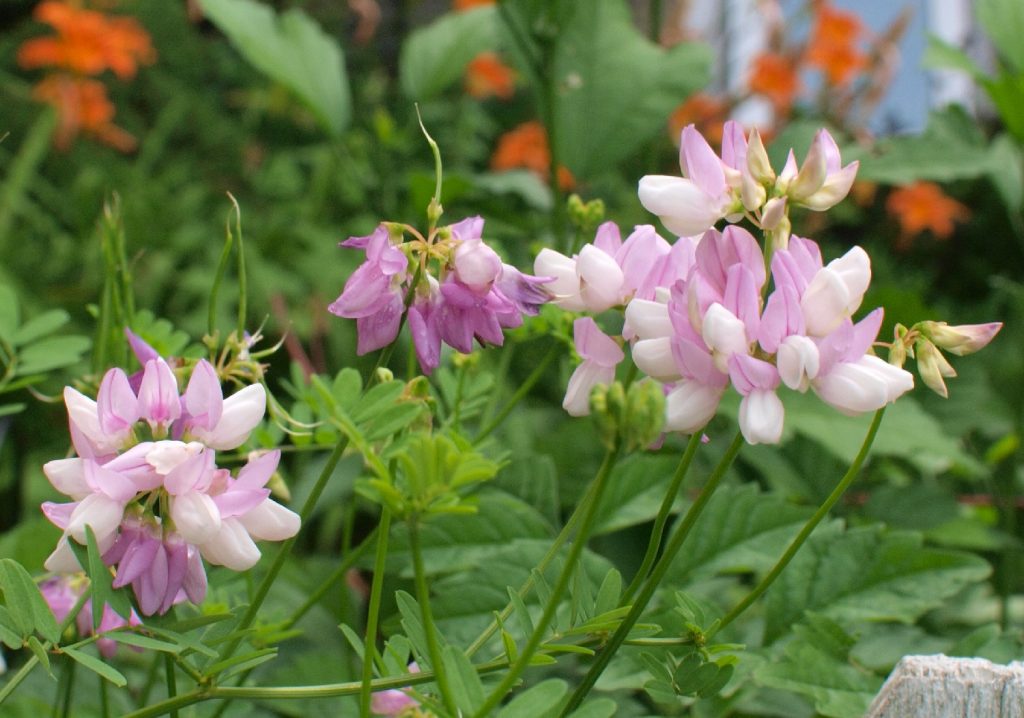
Mint
It’s always best to try and be careful growing mint as a companion thanks to its invasiveness – but various species are great at deterring aphids and beetles. You’ll also find mint is a natural attractant for earthworms, meaning you can expect more aerated soil for your turnips. Catmint, in particular, is highly recommended as a friend to turnips.
Growing mint in its own pot or plot away from turnips’ soil is essential – as this herb will overrun your mustards if given the smallest of opportunities.
What to avoid planting with turnips
As brassicas, turnips need plenty of space for root growth – and despite the fact these mustard plants can prevent pests from spreading in many cases, they may also transfer invasive pests to weaker plants. Here’s a list of plants and vegetables incompatible for growing with turnips.
Knotweed
Knotweed is a particularly aggressive grower – meaning it will likely choke space away from your turnips’ roots. Beyond this, knotweed can also cause serious soil damage – avoid it at all costs.
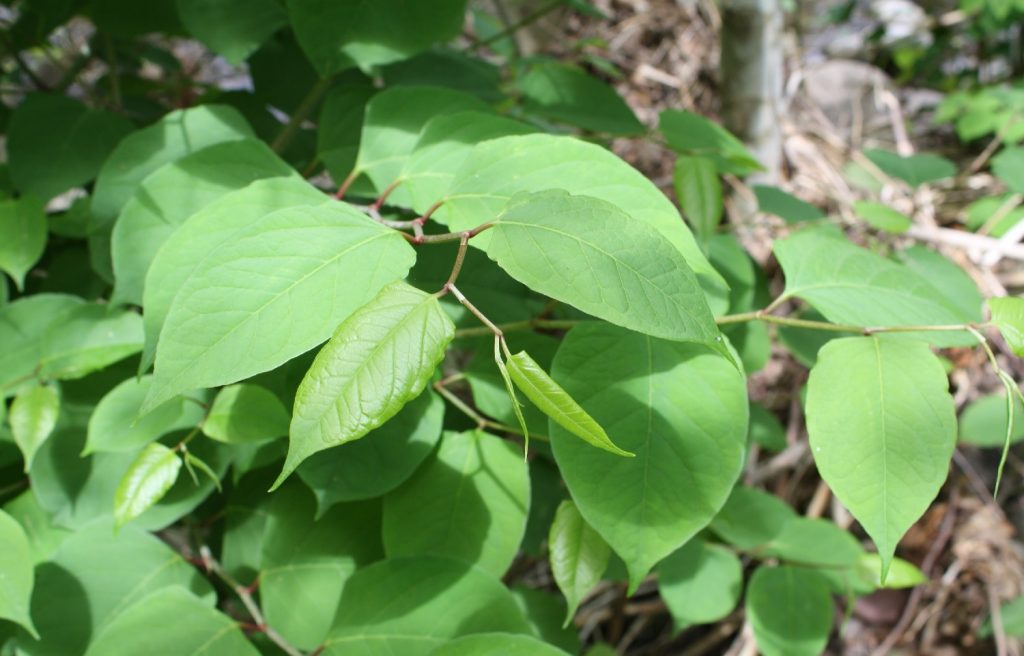
Potatoes
Much like onions, potatoes are highly competitive when it comes to root space. However, unlike onions, there are no benefits to growing potatoes with turnips to balance the negatives. Potatoes will not only overtake space in your turnips’ soil, but they will also consume much of the nutrition your crops sorely need.
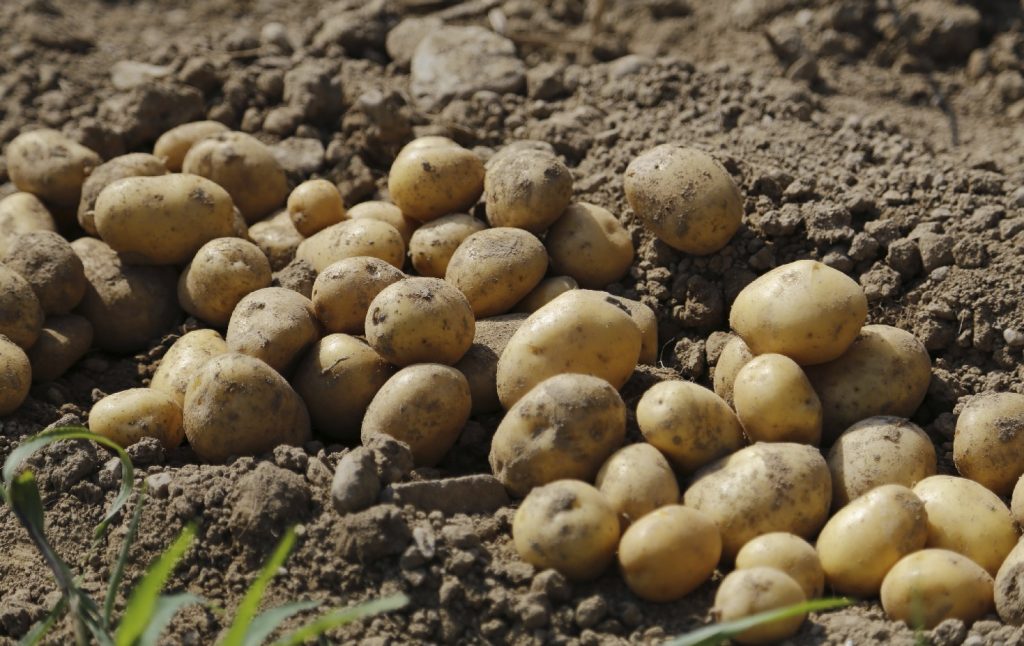
Horseradish
Horseradish and turnips are mutually detrimental to each other – horseradish will over-compete for root space and restrict turnip growth. In return, turnips can transfer pests to horseradish post-harvest. Neither plant offers protection to the other – ensure you grow radish plants – and not the ‘horse’ variety.
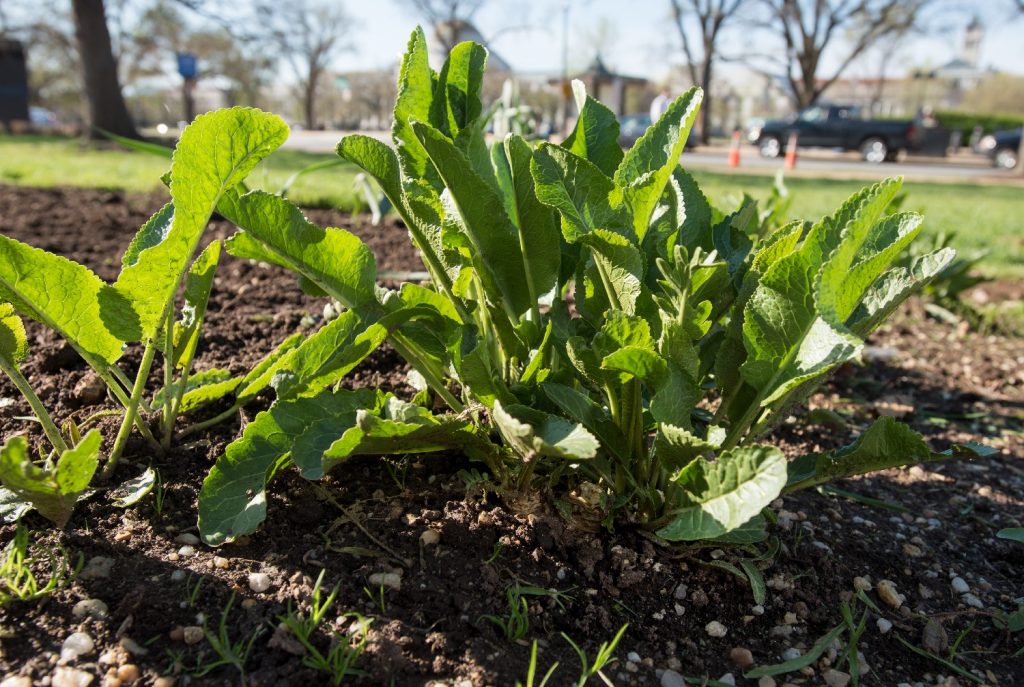
Other mustard plants
Hedge mustard, in particular, is not recommended for growing alongside turnips – simply due to competition. Mustard plants of varying species will push each other out for space in the soil and nutrients. In addition, the hedge mustard can attract pests that will eat away at your turnips.
Carrots
While carrots are fairly sensitive and unassuming as root vegetables go, they will compete fiercely with turnips for space in the soil. They’ll also attract flies that will happily munch on turnips, with the mustard plants not providing any additional support in return. The same applies to growing turnips with other root vegetables – there will be simply too much competition.
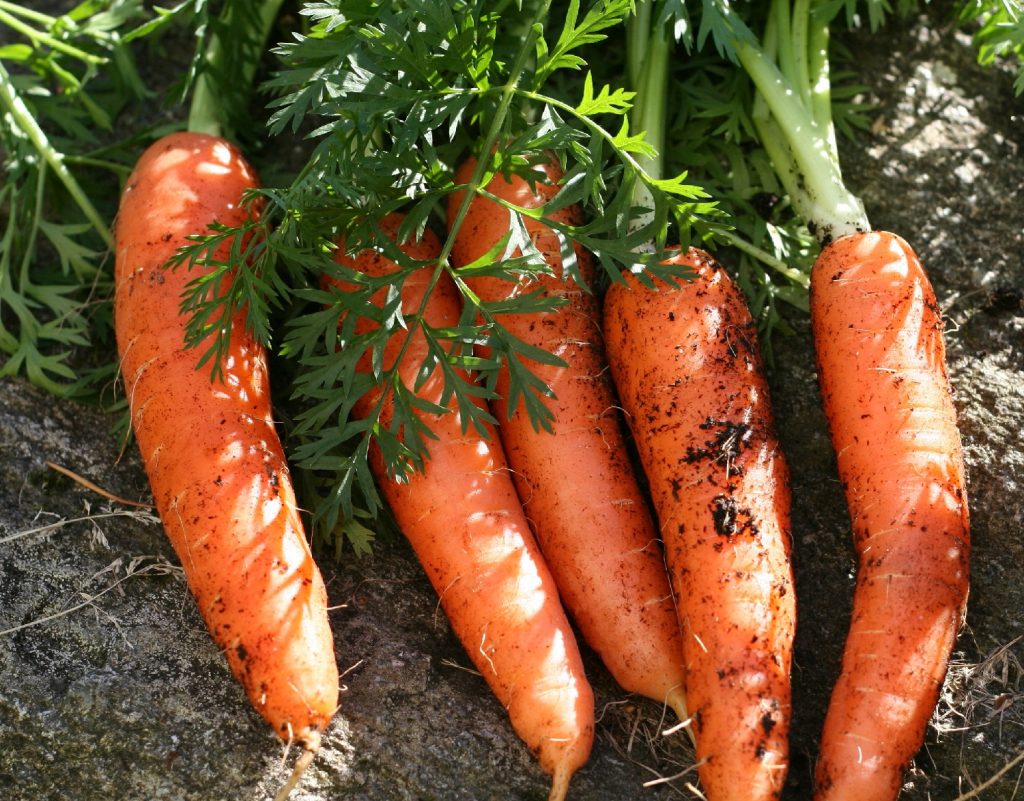
Is companion planting with turnips worth it?
While turnips are reasonably hardy and will grow well without companionship, you’ll get bigger yields and healthier crops when you protect them with other plants and herbs. Protecting mustard crops with chemicals is a no-no – making companion planting an ideal solution to keeping invasive insects out of your turnip plot.
Companion planting alongside turnips will also help to bring pollinators to your plot, encouraging stronger growth (with added benefits for your wider garden, too). Turnips will frequently give as many benefits to their companions as they receive – and planted alongside herbs and specific alliums, you can expect a rich crop ready for the kitchen.
Turnips grow amazingly fast – and if you’re particularly lucky, you may expect a healthy harvest twice yearly. Choose a clutch of companion crops to help bolster their growth in spring and fall, and you may find your vegetables grow stronger and tastier!
